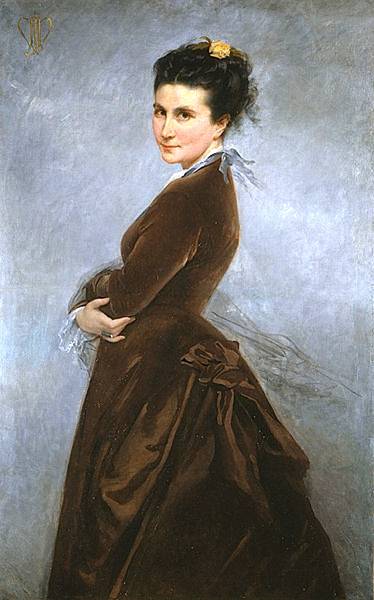by Alta Macadam
A small but very choice exhibition has come to Florence from the Jacquemart-André Museum in Paris (runs until 31st December). It is housed in the Villa Bardini, one of the city’s most recent exhibition spaces, home also to a museum of the huge collection that was put together by the art dealer Stefano Bardini in the 1870s and 1880s.

From the entrance you make your way through the villa garden, designed around a central staircase flanked by beds where the plants are changed according to the season, and box hedges. The grottoes and wall fountains produce a pleasing sound of water which melts into the peaceful tones of birdsong. The garden is in the very heart of Florence and the truly magnificent, unique close-up view of the city is its most spectacular feature.
It is particularly fitting that the exhibition from the Jacquemart-André should be exhibited here since Edouard André and Nélie Jacquemart both knew and corresponded with Stefano Bardini and purchased some Renaissance works from him in the 1880s. Edouard died in 1894 and it was Nélie who created the famous Italian Renaissance section of their renowned Parisian museum (she herself was a skilled painter, and her self-portrait from 1880 is also on display here).
All the paintings in the exhibition are of very high quality (and nearly all of them are in very fine frames, mostly original). The portrait of a lute-player by Francesco Salviati could be taken at first glance for a Pontormo: it is a magnficent painting, memorable too for the prettily striped cloth in the foreground. Mantegna’s Ecce Homo (c. 1500) is one of the treasures of the collection. Cima da Conegliano’s Madonna and Child includes a lovely landscape, and the Madonna is dressed in a magnificent red, blue and golden cloak. The loveliest of three works attributed to Botticelli is the smallest, a Madonna and Child which, although damaged, reveals the master’s skill in the delicate rendering of the Madonna’s hair, veil and halo. Another famous work is Paolo Uccello’s St George and the Dragon: the thin beast is full of character, though it is perhaps the walled garden in the background which is the most interesting part of the work.
Other paintings by less well-known artists, but all of extreme interest, include a tiny Narcissus (by an early 15th-century Umbrian artist); a portrait of a man in profile, one of the best works by the Dalmatian artist Giorgio Culinovic known as Schiavone, dated 1504; a crowded processional scene attributed to Verrocchio and his workshop; and a tiny painting of Christ of the Apocalypse by Zanobi Strozzi (unfortunately damaged). A charming scene of a birth by Scheggia is set in a pink and grey house and shows a group of six men approaching the bedside bearing gifts (mostly welcome food!). This was clearly a desco da parto, a circular ‘tray’ presented to a mother after childbirth (and traditionally used for her first meal). Many such deschi have survived, some of them painted by the best artists of the day.
Interspersed amongst the paintings are some exquisite small sculptures, including a small bronze Hercules and the Centaur by Giambologna, a tiny bronze plaque of Judith and the Head of Holofernes by Riccio, and a rectangular relief in bronze of the Martyrdom of St Sebastian by Donatello (especially interesting for its unusual iconography).
This exhibition is well worth visiting, both for its superb works as well as for the setting of the villa itself on its garden hillside in the very centre of Florence. And you can leave by the door on Costa San Giorgio and walk a few metres up that lovely old walled lane to the Forte di Belvedere, which has recently been reopened to the public after many years of closure. It provides another celebrated viewpoint of the city.
Alta Macadam is the author of many Italian Blue Guides, including Blue Guide Florence






